Is wood glue safe on the jointer?
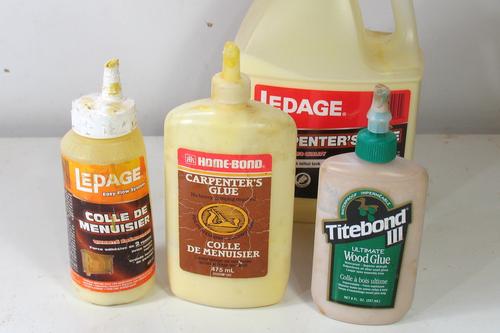 Some people commented on my article about
plywood on the jointer that glue will
damage jointer knives. That the glue in plywood nicks the jointer was new to me
(though I had never really experimented), but I'd always assumed that wood
glues were safe. So this got me curious enough to do some experiments.
Some people commented on my article about
plywood on the jointer that glue will
damage jointer knives. That the glue in plywood nicks the jointer was new to me
(though I had never really experimented), but I'd always assumed that wood
glues were safe. So this got me curious enough to do some experiments.
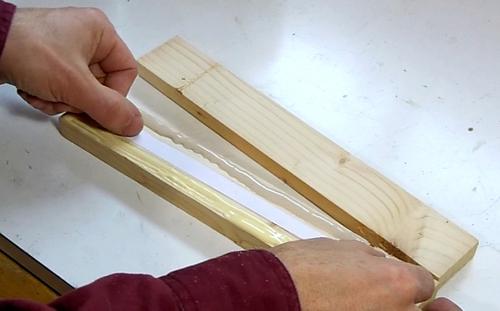 I made a test piece of two pieces of spruce laminated together. On one side,
I put down a thick bead of Titebond 3, and on the other side, regular yellow glue
(three of the four glues above are yellow glue). I assume the yellow glues are all pretty similar.
I made a test piece of two pieces of spruce laminated together. On one side,
I put down a thick bead of Titebond 3, and on the other side, regular yellow glue
(three of the four glues above are yellow glue). I assume the yellow glues are all pretty similar.
I didn't try some of the other glues that I tested in my earlier glue strength tests. The Weldbond had all gone bad, but I never really used it for furniture, and I know it's pretty soft. And the Gorilla glue I considered unsuitable. If you have any gap, that glue foams up, and squeezes most of the glue out of the joint.
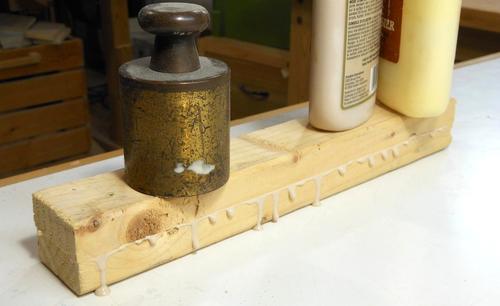 Lots of squeeze out. I should have clamped the test piece though, because as the moisture of the glue
migrated into the wood, the wood bowed away from the joint a bit. Oops!
Lots of squeeze out. I should have clamped the test piece though, because as the moisture of the glue
migrated into the wood, the wood bowed away from the joint a bit. Oops!
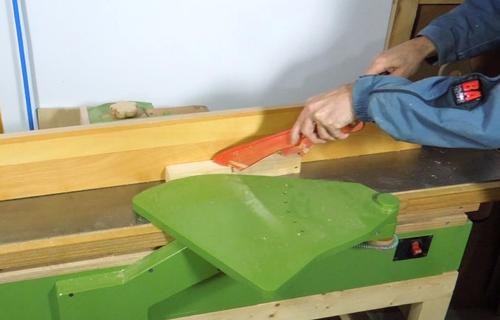 With the glue dried for a day, I took repeated passes on the jointer of both glue lines.
With the glue dried for a day, I took repeated passes on the jointer of both glue lines.
Result: I couldn't see any noticeable nicking from the glue.
So my conclusion: Wood glue does not damage jointer knives.
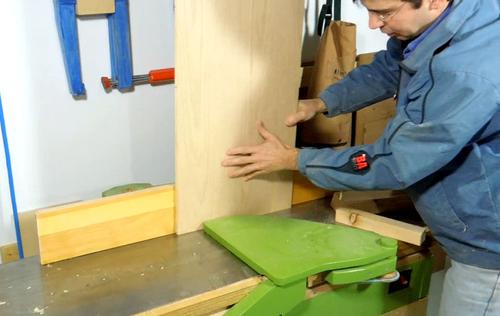 I knew the birch plywood caused quite a bit of nicking of the knives, but I wasn't sure
if regular plywood would. So I used some regular oak veneer plywood and took some
passes with that.
I knew the birch plywood caused quite a bit of nicking of the knives, but I wasn't sure
if regular plywood would. So I used some regular oak veneer plywood and took some
passes with that.
This plywood did cause some nicking of the knives, though not nearly as bad as the birch plywood. So if your jointer knives aren't pristine anymore anyway, cutting a little bit of plywood might be within reason.
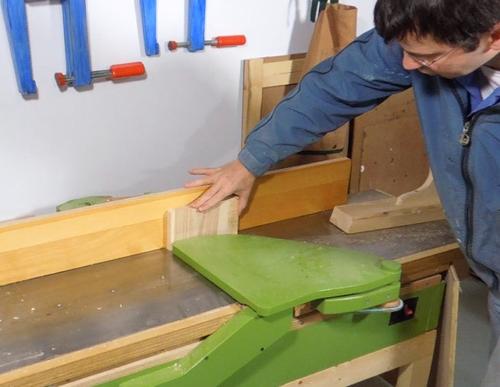 While I was at it, I figure I might as well see if end grain causes damage. So I used some ash wood
(some of the hardest stuff I have around) and repeatedly cut slices off the end grain.
While I was at it, I figure I might as well see if end grain causes damage. So I used some ash wood
(some of the hardest stuff I have around) and repeatedly cut slices off the end grain.
Notice my hand position. If I'm holding a small piece like that, I always put two of my fingers over the fence. That way, even if the work piece got thrown out of my hands, my fingers wouldn't make it down to the cutter head.
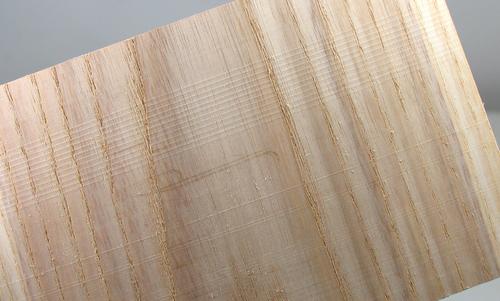 Afterwards, I put that same piece of ash across sideways.
Afterwards, I put that same piece of ash across sideways.
Passing it sideways really makes any sort of nicks show up very clearly. That row of regularly spaced nicks is from my earlier discovery that birch plywood really nicks jointer knives But I couldn't see any signs of wear from cutting the end grain. So I'm pretty sure end grain is safe on the jointer as well.
Aother thing that definitely damages the cutters is any sort of paint, especially white paint. The white titanium oxide pigment in the paint is quite abrasive on knives. I sometimes hand-plane some paint off of wood, and the plane needs re-sharpening for about every thirty seconds of use!
Back to my woodworking website